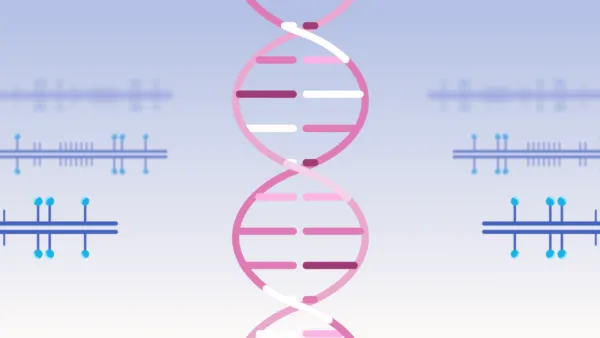Guide to your Galleri® test result
Your Galleri test result will be available about two weeks after your sample is received at the GRAIL lab.

Things to remember:
- Galleri is a screening test and does not diagnose cancer. Diagnostic testing is needed to confirm cancer.
- The Galleri test identifies DNA shed by cancer cells and does not predict your future genetic risk for cancer.
- The Galleri test does not detect a signal for all cancers and not all cancers can be detected in the blood.
- False positive and false negative results do occur.
- Continue with routine cancer screening tests your healthcare provider recommends.
How to interpret your results
There are 2 possible test results:
- No Cancer Signal Detected
- Cancer Signal Detected
Nearly 99% of people who use the Galleri test, will screen negative1 — which is exactly what you want to hear.
Around 1% of people ages 50-79 are expected to receive a Cancer Signal Detected test result.1 This result will include the predicted tissue type or organ associated with the signal, called a Cancer Signal Origin (CSO). After diagnostic evaluation, around 62% of these people are expected to have a confirmed cancer diagnosis.2
The Galleri test does not detect a signal for all cancers and not all cancers can be detected in the blood. False positive and false negative results do occur. The Galleri test should be used in addition to healthcare provider recommended screening tests.

What do Galleri test results mean?
The Galleri test detected DNA fragments associated with cancer in your blood sample. About 1 out of every 100 tests has a Cancer Signal Detected result.1
This result will also include a prediction of the tissue type or organ associated with the cancer signal, called a Cancer Signal Origin (CSO). This provides direction to your doctor on the cancer’s origin and can help guide the next steps for diagnosis.3,4
In a clinical study, around 6 out of 10 people with a Cancer Signal Detected result were diagnosed with cancer after diagnostic testing.5*

NEXT STEPS
A Cancer Signal Detected test result is not a cancer diagnosis and requires follow-up diagnostic testing. Such testing may include lab work or imaging ordered by your healthcare provider to confirm cancer.
The cost of the Galleri test does not include additional diagnostic testing to confirm cancer. If you have questions about obtaining insurance coverage for diagnostic tests, please contact the GRAIL patient advocate, patient-advocate@grailbio.com for assistance.
*Based on the first ~25,000 participants with 1 year of follow-up.
The Galleri test did not detect DNA fragments associated with cancer in your blood sample.
Nearly 99% of people who use the Galleri test will screen negative.1
This result does not completely rule out the possibility of cancer. While the Galleri test is a powerful tool, it cannot detect a signal for all cancers and not all cancers can be detected in the blood. Some cancers shed little or no DNA into the bloodstream, making them unlikely to be detected through a blood test (e.g., brain, skin, and early-stage breast and prostate cancers).6 False positive and false negative results do occur. This result does not predict whether you will develop cancer in the future.

Continue with any routine cancer screenings your healthcare provider recommends. Do not ignore cancer signs or symptoms if they occur as this could lead to a delayed diagnosis.
Cancer can be unpredictable. The Galleri test can be taken as a simple annual blood test. Adding the Galleri test to annual wellness visits can improve your chance of finding cancer early.7 Ask your healthcare provider when it is best to test again.
The Galleri test does not detect a signal for all cancers and not all cancers can be detected in the blood. False positive and false negative results do occur.
The Galleri test should be used in addition to healthcare provider recommended screening tests.
How does the test work?
Cancers growing in the body shed DNA into the bloodstream.3,5,6 Although there are many types of cancer, the DNA fragments act like a unique “fingerprint” of cancer. The Galleri test screens for many of the deadliest cancers before they become symptomatic,3 including some without recommended screening tests.3,7 The Galleri test results provide direction to your healthcare provider on the cancer’s origin and can help guide next steps for diagnosis.1*
*GRAIL, Inc. Data on file: VV-TMF-59592

How the Galleri test was developed to identify a Cancer Signal?
The Galleri test was developed using a database containing thousands of blood samples from people with and without cancer.3,5
This database is the largest of its kind in the world, created by GRAIL. The Galleri test uses advanced technology and pattern recognition to detect a Cancer Signal and predict the Cancer Signal Origin.3,6

Have more questions?
The Galleri test is recommended for use in adults with an elevated risk for cancer, such as those age 50 or older. The test does not detect all cancers and should be used in addition to routine cancer screening tests recommended by a healthcare provider. The Galleri test is intended to detect cancer signals and predict where in the body the cancer signal is located. Use of the test is not recommended in individuals who are pregnant, 21 years old or younger, or undergoing active cancer treatment.
Results should be interpreted by a healthcare provider in the context of medical history, clinical signs, and symptoms. A test result of No Cancer Signal Detected does not rule out cancer. A test result of Cancer Signal Detected requires confirmatory diagnostic evaluation by medically established procedures (e.g., imaging) to confirm cancer.
If cancer is not confirmed with further testing, it could mean that cancer is not present or testing was insufficient to detect cancer, including due to the cancer being located in a different part of the body. False positive (a cancer signal detected when cancer is not present) and false negative (a cancer signal not detected when cancer is present) test results do occur. Rx only.
The GRAIL clinical laboratory is certified under the Clinical Laboratory Improvement Amendments of 1988 (CLIA) and accredited by the College of American Pathologists. The Galleri test was developed — and its performance characteristics were determined — by GRAIL. The Galleri test has not been cleared or approved by the Food and Drug Administration. The GRAIL clinical laboratory is regulated under CLIA to perform high-complexity testing. The Galleri test is intended for clinical purposes
- Schrag D, Beer TM, McDonnell CH, et al. Blood-based tests for multi-cancer early detection (PATHFINDER): a prospective cohort study. Lancet. 2023;402:1251-1260. doi: 10.1016/S0140-6736(23)01700-2
- Nabavizadeh N, et al. Safety and performance of a multi-cancer early detection (MCED) test in an intended-use population: initial results from the registrational PATHFINDER 2 study [proffered presentation]. European Society for Medical Oncology (ESMO) Annual Meeting; 2025 Oct 17-21; Berlin.
- Klein EA, Richards D, Cohn A, et al. Clinical validation of a targeted methylation-based multi-cancer early detection test using an independent validation set. Ann Oncol. 2021 Sep;32(9):1167-77. doi: 10.1016/j.annonc.2021.05.806
- Sasieni P, Clarke CA, Hubbell E. Impact of MCED screening interval on reduction in late-stage cancer diagnosis and mortality. European Society for Medical Oncology (ESMO) Virtual Congress [poster]; 2021 Sep 16-21.
- Liu MC, Oxnard GR, Klein EA, et al. Sensitive and specific multi-cancer detection and localization using methylation signatures in cell-free DNA. Ann Oncol. 2020 Mar 30;31(6):745-59. doi: 10.1016/j.annonc.2020.02.011
- Thierry AR, El Messaoudi S, Gahan PB, et al. Origins, structures, and functions of circulating DNA in oncology. Cancer Metastasis Rev. 2016 Jul 8;35:347–76. doi: 10.1007/s10555-016-9629-x
- US Preventive Services Task Force. A,B,C grade recommendations, cancer, screenings. [cited 2023 Oct 23]. https://www.uspreventiveservicestaskforce.org/uspstf/topic_search_results